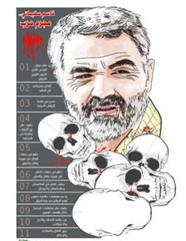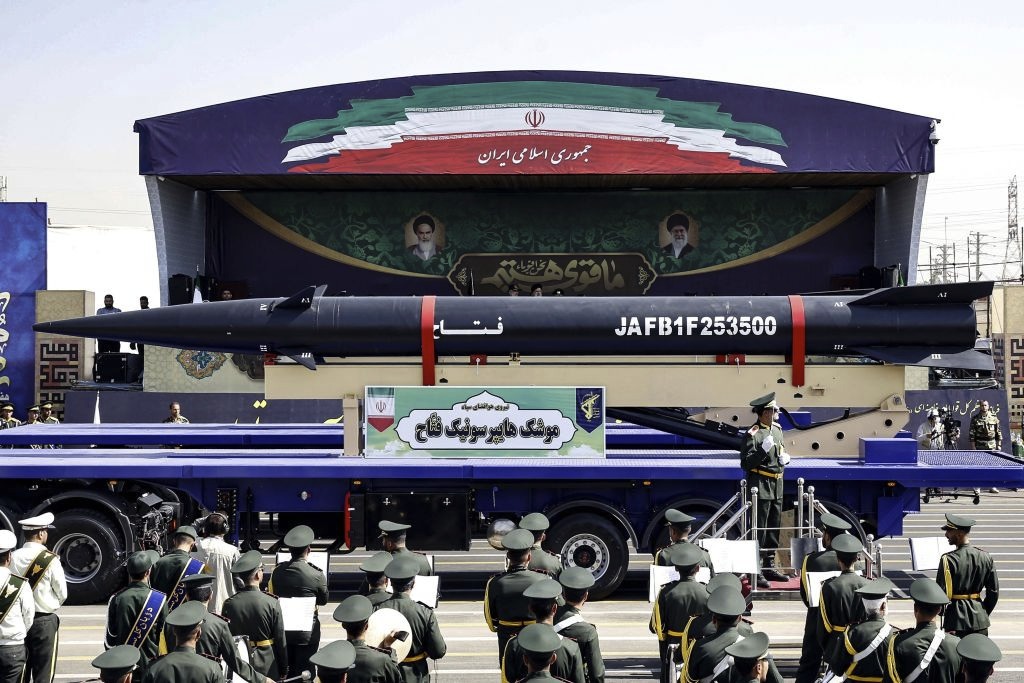Iran seeks to complete the crescent
Eyad Abu Shakra/Al Arabiya/September 18/16
Two significant developments, both connected to conflict raging between Iran’s creeping influence and the remaining defenders of Arab identity, took place in the Arab Mashreq region last week.The first is the undisguised attempt of demographic changes in the environs of the Syrian capital Damascus and the completion of what was concealed in and around the city of Homs. The second was the aborted Yemeni Houthi tour of friendly countries run by Iran’s followers in the Middle East. These two developments confirm what Jordan’s King Abdullah II called “the Shiite Crescent,” soon to be affirmed by Egypt’s ex-president Hosni Mubarak when he openly accused Arab Shiites of having sectarian loyalty to Iran. However, it must be said, that Shiite loyalty and claimed love for the descendants of the Prophet Mohammad (PBUH) in this particular case are merely a veil of convenience concealing a vengeful Persian nationalistic project that has nothing to do with Islam and runs contrary to Muslim unity and interests. Under the watchful eyes of the international community – as represented by the UN – the uprooting and driving out of the populations of towns and suburbs that circle Damascus in the Ghouta region, Barada River Valley and Qalamoun Mountains is gathering pace, while on the northern frontiers with Turkey de facto borders are being drawn to separate Turkish and Kurdish dominated areas. In both cases, this is being played out against a background of clear agreement between Washington and Moscow on temporary ceasefires under the excuses of delivering emergency supplies to besieged people and defining “terrorist groups” in order to distinguish them from “the moderate opposition” while totally ignoring the regime’s air raids and the blatant military intervention of Iran, directly and indirectly through its sectarian militias from Lebanon, Iraq, Afghanistan and elsewhere.
Blatant action
What I mean is that what was a few months ago a secretive course of action has now become a declared local, regional and international policy. I believe that the freezing of Syria’s southern front (namely in the provinces of Daraa and Quneitra), allowing the opposition to advance in the province of Hama, and the ongoing geographic and demographic demarcation along the Syria – Turkey borders are undeniable facts on the ground that can only be explained by the existence of at least preliminary maps for the boundaries and frontiers of a future Syria, which at best would be a federal state whereby Iran, Turkey and the Kurds would probably enjoy their own fiefdoms at the expense of Sunni Arabs. Under the watchful eyes of the international community – as represented by the UN – the uprooting and driving out of the populations of towns and suburbs that circle Damascus … is gathering pace
With regards to the Houthi tour that began by visiting Iraq, it has merely confirmed the obvious. It has highlighted the Policy of Axes which Iran has succeeded in imposing on the region against international silence. There is little doubt that the Houthis today are nothing more than Tehran’s hand in southern Arabia.
The deposed president, Ali Abdullah Saleh, who is currently the Houthis’ main local ally and backer, had left them to grow and expand their influence and thanks to his smart manipulation, they managed to rule and dominate Yemen for decades. Saleh always believed in pitting one Yemeni faction against another in a dangerous balancing game.
Exploitation
Indeed, I surmise that his plan was to intentionally exploit the Houthi phenomenon against the Sunni Islamist Yemeni Reform Rally and the Leftist Socialists of former South Yemen and later against al-Qaeda. However, within a few years it seems that he realized, as he was passing through their mountain strongholds in northern Yemen, that those who he once believed to be his puppets and a card he could play in the Yemeni political game were now Tehran’s fifth column, whose affinities and loyalty were toward Iran. This led to the 2004 war in which their leader Hussein Badreddin al-Houthi was killed.
Thus, it can be said that Saleh was fully aware of the connections between the Houthis and Iran before 2011. He is surely even more aware of it now that he has decided to join them in a dangerous sectarian conflict with regional bearings. To wrap up, the initial planned tour of Iraq, Lebanon and Iran – before it was aborted after the stop in Baghdad – and the Iraqi financial aid given to the Houthis point out that the Persian Crescent under a Shiite guise is now complete as it has reached southern Arabia.
**This article was first published in Asharq al-Awsat on Sept. 17, 2016.






















